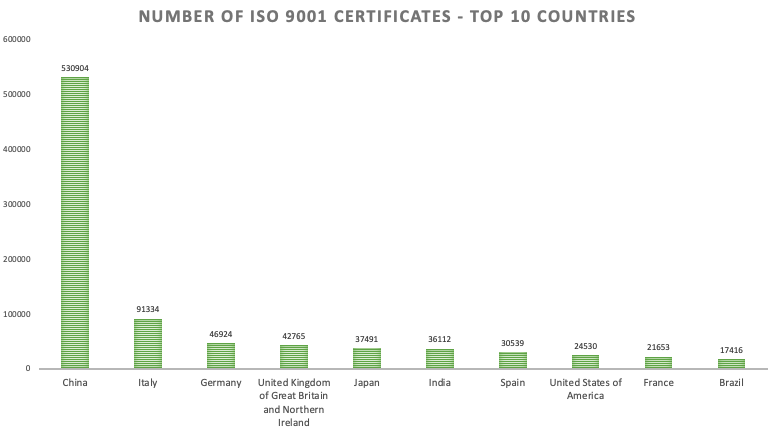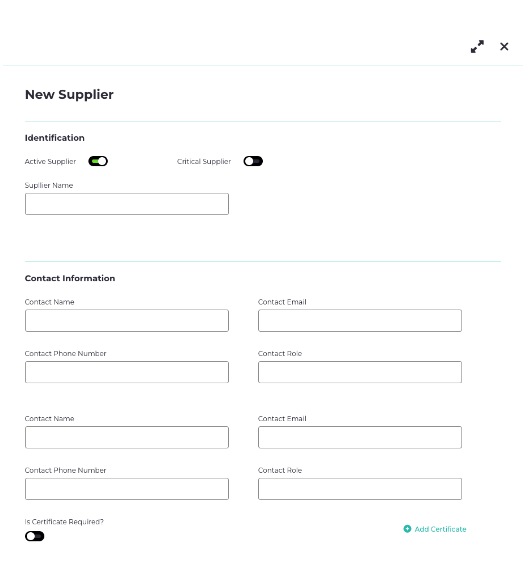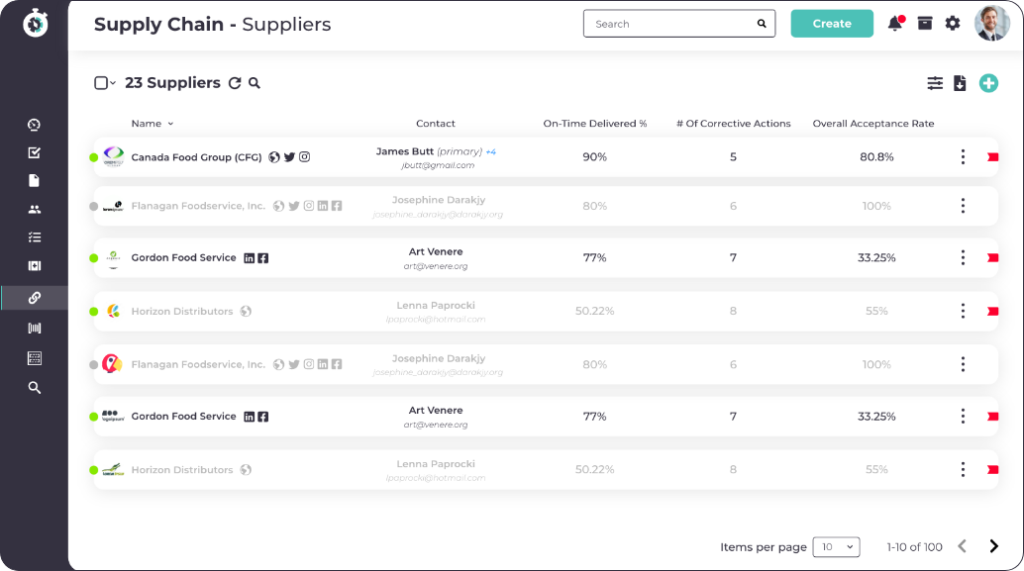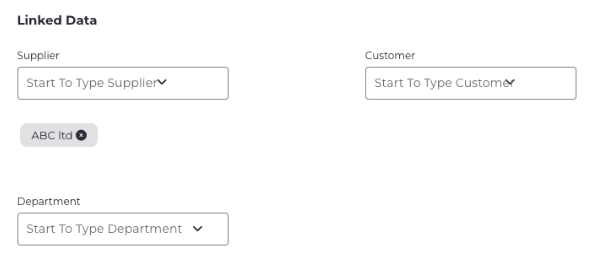We’ve been diving deep into ISO 9001 in our blogs lately. If you head to our ISO 9001 category or simply search for ISO 9001-related articles on our website, you’ll find a treasure trove of materials. Our ISO 9001 audit checklist has been particularly popular.
But we get it – sifting through all those resources can be a bit overwhelming if you’re looking for a comprehensive view of ISO 9001. That’s why we’re putting together a one-stop-shop for all your ISO 9001 inquiries. This page will be like a hub, connecting you to everything you need to know about ISO 9001, whether it’s the latest updates, timeless principles, or handy tools like PDFs and spreadsheets. Some topics will be covered right here, while for others, we’ll point you to relevant internal pages. Let’s make navigating ISO 9001 a breeze!
Based on your experience, you can jump to specific sections of this page. This will save you time.
Prefer Video? Check this out!
I have just started my journey with ISO 9001
1. What is ISO?
The International Organization for Standardization (ISO) is a non-governmental organization that develops international standards with input from national standards organizations of member countries. Established on February 23, 1947, ISO has published over 25,000 standards covering various areas of technology and manufacturing. It operates through more than 800 technical committees and subcommittees responsible for standards development.
2. What is ISO 9001?
ISO 9001 is a globally recognized standard for Quality Management Systems (QMS), obviously published by ISO. It helps organizations ensure they consistently deliver products and services that meet customer requirements and enhance satisfaction. ISO 9001 certification is highly regarded as the gold standard for product quality, which is why manufacturing companies strive to attain it.
3. Why is ISO 9001 important?
The benefits of ISO 9001 are multifold. As we move ahead, you will learn, there are multiple clauses under ISO 9001 and each clause helps achieve a specific objective. So even though the overall objective is to achieve better product quality, there are many underlying benefits too.
So the main benefits of ISO 9001 are,
- Improves quality management processes
- Enhances customer satisfaction
- Reduces risks
- Increases efficiency
- Demonstrates commitment to quality
- Provides a competitive edge in the marketplace
4. Mention all the ISO 9001 versions chronologically
The different versions of ISO 9001 are as follows:
- ISO 9001:1987: The first one, all about quality assurance in design, production, and such.
- ISO 9001:1994: Introduced process-based systems and the idea of always getting better for customers.
- ISO 9001:2000: Big overhaul! It switched from rules to processes, putting customer happiness front and centre.
- ISO 9001:2008: little tweaks to make expectations clearer and the introduction of process based auditing.
- ISO 9001:2015: The latest and greatest. Now it’s all about thinking ahead, focusing on processes, risk mitigation, and playing well with others in the ISO family.
5. Who can benefit from ISO 9001 certification?
Even though most organizations that want to improve their quality management system, can go for ISO 9001 certifications. For quality management software like Isolocity, it makes more sense to keep the system compliant with ISO 9001 requirements because, as a company, our objective is to help our clients achieve ISO 9001 certification and not attain one by ourselves.
But here, we would like to mention three industries that cannot and should not ignore the benefits of ISO 9001 certification.
Industries
- Manufacturing: It’s fairly intuitive: Manufacturing companies, which produce tangible goods, naturally prioritize enhancing product quality, as it directly impacts their core business operations.
- Healthcare: In healthcare industries such as biotechnology, pharmaceuticals, and healthcare providers, quality can be a matter of life and death. Therefore, obtaining ISO 9001 certification for their quality management systems is paramount for these companies.
- Food: While food technically falls under manufacturing, it’s worth highlighting separately due to the significant implications of any compromise in food quality, affecting millions of people and potentially resulting in substantial financial losses. While food companies may pursue additional certifications like HACCP and SQF, ISO 9001 should serve as the fundamental foundation for their quality management systems.
Size
Regardless of size, ISO 9001 holds relevance for all organizations. The absence of ISO 9001 compliance can lead to increased penalties, particularly depending on the scale or impact of products. Therefore, larger organizations often place greater importance on ISO 9001 due to potentially higher penalties. However, this doesn’t diminish the significance of ISO 9001 for smaller organizations. While a larger organization might withstand a million-dollar penalty, a smaller one could struggle with even a $100K fine. Nevertheless, let’s maintain a positive perspective. Just as in marriage, where some may marry to avoid loneliness while others marry for love, focusing on customers and product quality can mitigate fears of penalties. Of course, this requires implementing the right checks and balances.
Geography
This can be best answered with a graph.
Countries with the most valid ISO 9001 certificates as of 2022
This graph has 4 continents, Asia, Europe, South America, and North America right there. So ISO 9001 is valid for every country as it is a global standard.

Data source : Iso.org
6. What are the steps involved in implementing ISO 9001?
It can mainly be elaborated in 7 steps.
- Understanding the Standard: Get familiar with ISO 9001 and what it requires.
- Implementing a QMS: Set up processes, procedures, and documentation to meet ISO 9001 requirements.
- Internal Audits: Check your compliance and find areas to improve through internal audits.
- Management Review: Top management reviews the QMS to ensure it’s working well.
- Certification Audit: An external auditor checks if your QMS meets ISO 9001 standards.
- Certification Decision: Based on the audit findings, the certification body decides whether to grant ISO 9001 certification.
- Surveillance Audits: Keep up with periodic audits to maintain your ISO 9001 certification.
While ISO 9001 doesn’t explicitly mandate the use of quality management software, based on our experience, opting not to use such software could complicate your operations and potentially cause months of stress. Without it, managing audit trails, whether on paper or in the cloud, becomes arduous. Additionally, since audits are continual rather than isolated events, maintaining centralized information accessible to all stakeholders becomes paramount. This centralized approach, aligning with ISO 9001’s structure, is the linchpin to achieving ISO 9001 certification.
7. What are the key principles of ISO 9001?
We’ve covered the 7 key principles of ISO 9001 in a dedicated blog post. Each principle aligns with relevant clauses, ensuring clarity and alignment with ISO standards. The 7 principles are,
- Customer Focus
- Leadership
- Engagement of People
- Process Approach
- Improvement
- Evidence-Based Decision Making
- Relationship Management
Explore our blog titled “What are the 7 principles of ISO 9001?” for a comprehensive understanding of these fundamental principles and their significance in quality management.
8. What are the main components of ISO 9001?
So, when it comes to ISO 9001, here’s what you need to know:
- Quality Policy: It’s like the organization’s mission statement for quality and keeping customers happy.
- Quality Objectives: These are the goals set by the organization to make sure they’re living up to their quality policy.
- Quality Manual: Think of it as the playbook for how the organization handles quality, covering everything from processes to procedures.
- Documented Procedures: These are the step-by-step guides for how things get done within the quality management system.
- Records: It’s the paperwork and data that prove the organization is doing what it’s supposed to be doing.
- Process Approach: This is all about having a smart strategy for managing how things get done to achieve the best results.
- Continual Improvement: It’s the ongoing effort to make things even better, keeping customers happy and the organization ahead of the game.
9. What are the clauses and subclauses of ISO 9001?
Here are the ISO 9001:2015 clauses:
Clause 4 : Context of the Organization:
4.1 : Understanding the organization and its context
4.2: Understanding the needs and expectations of interested parties
4.3: Determining the scope of the quality management system
4.4: Quality management system and its processes
Clause 5 : Leadership
5.1 : Leadership and commitment
- 5.1.1: Leadership and commitment for the quality management system
- 5.1.2 : Customer focus
5.2 : Quality policy
- 5.2.1 : Establish the quality policy
- 5.2.2 : Communicating the quality policy
Clause 6 : Planning
6.1 : Actions to address risks and opportunities
-
6.1.1 : Determine the risks and opportunities to be addressed
-
6.1.2: Plan the actions needed to address the risks and opportunities
6.2 : Quality objectives and planning to achieve them
-
6.2.1: Quality Objectives
-
6.2.2: Planning to Achieve Objectives
Clause 7 : Support
7.1 : Resources
-
7.1.1 : General
-
7.1.2 : People
-
7.1.3 : Infrastructure
-
7.1.4 : Environment for the operation of processes
-
7.1.5 : Monitoring and measuring resources
-
7.1.6 : Organizational knowledge
7.2 : Competence
7.3 : Awareness
7.4 : Communication
7.5 : Documented information
-
7.5.1 : General
-
7.5.2 : Creating and updating
-
7.5.3 : Control of documented information
- 7.5.3.1 : Availability and protection
- 7.5.3.2 : Physical security and document control
Clause 8 : Operation:
8.1 : Operational planning and control
8.2 : Determination of requirements for products and services
-
8.2.1 : Customer communication
-
8.2.2 : Determination of requirements related to products and services
-
8.2.3 : Review of requirements related to products and services
8.3 : Design and development of products and services
-
8.3.1 : General
-
8.3.2 : Design and development planning
-
8.3.3 : Design and development inputs
-
8.3.4 : Design and development controls
-
8.3.5 : Design and development outputs
-
8.3.6 : Design and development changes
8.4 : Control of externally provided products and services
-
8.4.1 : General
-
8.4.2 : Type and extent of control of external provision
-
8.4.3 : Information for external providers
8.5 : Production and service provision
-
8.5.1 : Control of production and service provision
-
8.5.2 : Identification and traceability
-
8.5.3 : Property belonging to customers or external providers
-
8.5.4 : Preservation
-
8.5.5 : Post delivery activities
-
8.5.6 : Control of changes
8.6 : Release of products and services
8.7 : Control of non-conforming process outputs, products and services
Clause 9 : Performance Evaluation
9.1 : Monitoring, measurement, analysis and evaluation
-
9.1.1 : General
-
9.1.2 : Customer satisfaction
-
9.1.3 : Analysis and evaluation
9.2 : Internal audit
9.3 : Management Review
-
9.3.1 : General
-
9.3.2 : Inputs
-
9.3.3 : Outputs
Clause 10 : Improvement
10.1 : General
10.2 : Nonconformity and corrective action
10.3 : Continual improvement
10. What is the rationale behind ISO 9001 starting from Clause 4 instead of Clause 1?
So, ISO 9001:2015 kicks off from Clause 4 because the first three clauses are like the warm-up act, setting the stage and giving us the basics. They define the scope of the standard, refer to external documents, and explain key terms.
Then, Clause 4, the “Context of the Organization,” is where the real show begins. Here, organizations dive into understanding their internal and external factors, getting a grip on what they need and what their stakeholders expect. It’s kind of like laying the groundwork before jumping into the action.
So, even though it’s technically the fourth clause, it’s where the main event starts. Think of it as the opening act that sets the tone for the rest of the performance—the nitty-gritty of how the organization’s quality management system operates.
11. What are the top 10 questions asked during an ISO 9001 audit?
Internal and external audits for ISO 9001 certification are crucial components of the process. We’ve created a PDF focusing on the top 10 questions commonly encountered during ISO 9001 audits. Explore it here: Top 10 questions asked during an ISO 9001 audit.
I have experience with ISO 9001
This sounds great. It’s always good to have an in-depth discussion about a topic that is so close to our heart. We have been in the quality management industry for two decades and as an ISO 9001 compliant company, we are well versed in all the avenues of ISO 9001. Here are questions with answers that can help you. We will also be sharing some materials like ISO 9001 audit checklist, a CAPA SOP, the 2024 QMS guide, scope of quality management system PDF, etc. So keep reading.
Let’s start with all the downloadable material first.
ISO 9001 Audit checklist :
This comprehensive ISO 9001 Audit checklist serves as your complete guide for conducting an audit within your organization. This template, based on a spreadsheet, empowers you to efficiently identify areas of improvement in alignment with ISO 9001 and take prompt action. Unlike static PDF checklists, which lack editability and usability, this dynamic spreadsheet template includes formulas, allowing you to simply update pertinent cells with your audit questions.
Even though this spreadsheet is self explanatory, in case you get confused, we also have this guide, “How to use our free ISO 9001 audit checklist” that will tell you how to use this spreadsheet.
CAPA SOP
If you’ve been immersed in the quality management field for some time, especially with ISO 9001, you’ve likely encountered Corrective and Preventive Actions (CAPA) and might have been on the lookout for a CAPA Standard Operating Procedure (SOP). While you may already have one, having an extra resource never hurts. Our approach is to provide practical templates that are genuinely useful for everyone, which is why we offer editable documents such as Word documents or spreadsheets. This CAPA SOP includes everything you could possibly need and comes in Word format for easy customization. Whether you need to tweak a few details, add your organization’s name, or make other adjustments, it’s all possible.
ISO 9001:2015 QMS Scope of work template
To fully grasp the essence of ISO 9001:2015 and its implications for a quality management system (QMS), it’s essential to have a Scope of Work document in place. This quality management system scope of work document serves as a foundational blueprint, providing a clear understanding of the QMS’s objectives, functionalities, and alignment with ISO 9001 standards.
Whether you’re just starting out or looking to refine your existing QMS, our comprehensive Scope of Work document is a valuable resource. Available in both PDF and Word formats, this editable and copyright-free document offers flexibility and convenience. It equips you with the necessary framework to delineate the scope and intricacies of your QMS, ensuring alignment with ISO 9001 requirements and organizational objectives.
Feel free to leverage this document to enhance your QMS or consolidate existing materials. It’s a versatile tool designed to streamline your quality management processes and optimize organizational performance.
2024 QMS Guide PDF
If you are someone who likes to read and understand the future, you should check out this 2024 QMS guide. It provides three essential aspects of the quality management system which is already proving to be true. Our forecasts from 2023 are increasingly validated by current events, as evident from recent developments in the news. These three aspects are,
-
Automation:
-
Sustainability and Environmental Considerations:
-
Remote Quality Auditing and Inspections:
ISO 9001 frequently asked questions
1. How can we optimize our supplier management processes to ensure alignment with ISO 9001 requirements and minimize risks to our supply chain?
Here are the supplier requirements as per ISO 9001 summarized in bullet points with relevant clause references:
- Quality Management System (QMS): Suppliers must have an established QMS documented in accordance with ISO 9001:2015 Clause 4.
- Product/Service Conformance: Compliance with specified requirements outlined in ISO 9001:2015 Clause 8.2.
- On-Time Delivery: Timely delivery as per agreed-upon schedules, in line with ISO 9001:2015 Clause 8.4.
- Product Traceability: Traceability of products or materials per ISO 9001:2015 Clause 8.5.
- Supplier Performance Monitoring: Ongoing assessment of supplier performance, referencing ISO 9001:2015 Clause 8.4.
- Risk Management: Identification and mitigation of risks related to product quality and delivery, per ISO 9001:2015 Clause 6.1.
- Communication and Collaboration: Effective communication and collaboration, aligning with ISO 9001:2015 Clause 7.4.
- Continuous Improvement: Commitment to continuous improvement, reflecting ISO 9001:2015 Clause 10.3.
As an experienced professional, you likely grasp these steps intuitively. Instead of elaborating on them, let’s illustrate how the introduction of a system can swiftly transform the entire process.
We strongly recommend a supplier management system for all these steps. Isolocity has a built-in supplier management system as a part of the QMS, so we will demonstrate how that can make your life much easier.
Example : Isolocity supplier management
Once you have finalized your supplier based on certain criteria (point 1), you can come to the Isolocity app and add all your suppliers in one place. You can also mention if certification is a mandatory field or not, and if yes, you can also add an expiry date to that, and you will be assigned to audit the certificate before the expiry date. As the expiration date approaches, the system will automatically remind you about the required certification. If you don’t have the certificate with you, you can also request that the supplier upload it.

Also, the system will automatically manage all required KPIs, like on-time delivery, number of corrective actions, and overall acceptance rate. For corrective actions, the supplier will be notified by the system, and the supplier can take the necessary actions. The supplier doesn’t need to login to the system for that.

Each product will be linked not only to its batch or parent product but also to its respective supplier and customer. This linkage ensures that in the event of any problem or issue with a product, you will immediately know which supplier and customers to contact.
So, as you can see, all your concerns will be resolved in one place. We’ve also published an in-depth blog covering this topic. You can find it by following this link : ISO 9001 section 8.4 – everything you need to know

2. What metrics and key performance indicators (KPIs) should we use to evaluate the effectiveness of our ISO 9001 compliant quality management system and drive meaningful decision-making at all organizational levels?
- Lead measures:
- Cost of Quality : Quality is good, but at what cost? You would want to keep it at an optimal level and most QMSs, like Isolocity, can track this.
- Open corrective action, total corrective actions, avg. open corrective action rate
- Outstanding training, audits, and document reviews
- Open NCR, change controls, deviations, quality events
- Lag measure
- Customer satisfaction index : Even though QMS might not be the best platform to capture CSI, as it is a full-fledged program in itself, it is a good idea to keep an eye on your CSI through other tools like CRM. Most QMSs like Isolocity offer integrations so that you can transfer data from one platform to another, i.e. from QMS to CRM and vice versa.
- Import Alerts, other notices from regulatory bodies, penalties, fines, etc.
3. What are the emerging trends and future developments in ISO 9001 standards, and how can we proactively adapt our QMS to stay ahead of the curve?
To proactively adapt your QMS to the changing requirements of ISO 9001, we suggest the following things:.
Keep an eye on ISO website
We know it is easier said than done. But we do have a way out for you so that you don’t have to visit the website each day.
- Go to https://visualping.io/
- Enter the url of the website you want to track
- Enter your email ID and frequency of alerts you want to receive
- Select visual , all page
- Start free monitoring
Gap Analysis
Conduct regular gap analysis to identify areas where your current QMS may not fully align with emerging trends and future developments in ISO 9001 standards. ISO is already working on ISO/CD 9001; it is still under development. It mainly has two sub-sections:
- The organization must consistently deliver products and services that meet customer and regulatory requirements.
- It strives to improve the system and ensure compliance with customer and regulatory requirements to enhance customer satisfaction.
So it seems ISO might bring some additional guidelines and we suggest keeping an eye here and doing gap analysis proactively to understand where you are falling short.
Technology adoption
When we talk about technology adoption, it extends beyond just implementing quality management software. It encompasses leveraging the latest developments to streamline processes and enhance efficiency.
AI: For instance, at Isolocity, we harness AI to handle backend tasks, ensuring smooth platform operation by swiftly addressing bugs and automating manual tasks. Similarly, you can explore how AI can optimize your operations.
Integration: Additionally, integration plays a crucial role in minimizing data handling efforts. Isolocity seamlessly integrates with Microsoft SharePoint and OneDrive. This integration eliminates the need for redundant data transfers; documents stored in OneDrive can be accessed and edited directly within the Isolocity software. Now, this is one example. You must be using all the different solutions. We suggest you use all the proper integrations feasible for your products.
4. ISO 17025 vs. ISO 9001 – how are they different?
ISO 9001 focuses on overall quality management processes to meet customer requirements, while ISO 17025 specifically addresses competence in testing and calibration laboratories. We wrote a detailed blog on this topic. Please checkout the same: ISO 17025 vs ISO 9001 – how are they different?
5. How to start a career as an ISO 9001 consultant?
If you’re aspiring to become an ISO 9001 consultant or auditor, we have a comprehensive blog tailored just for you. Take a look at it: How to start a career as an ISO 9001 consultant?
Some popular ISO 9001 books
Here are some of the most popular ISO 9001 books ever. These books are good for both new and experienced professionals.




